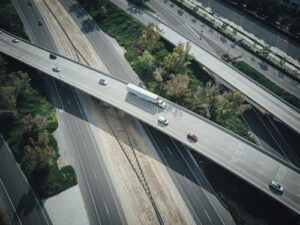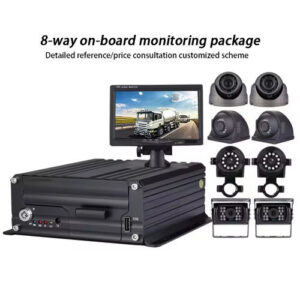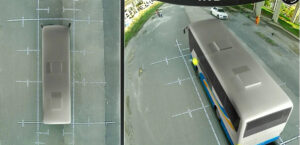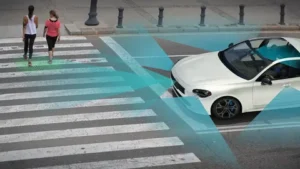A dash car camera is no longer a luxury—it has become a vital tool for modern drivers. As technology advances, these compact devices offer unparalleled benefits, from improving road safety to providing evidence in disputes. In this article, we’ll explore what makes dash car cameras essential, their applications, key features, and tips for choosing the right one.
1. What is a Dash Car Camera?
A dash car camera, or dashboard camera, is a small recording device mounted on the windshield or dashboard of a vehicle. Its primary function is to continuously record the road and surroundings while you drive. Depending on the model, these cameras may also record the car’s interior or offer advanced features like GPS tracking and night vision.
Dash cameras are popular among everyday drivers, professional fleets, and rideshare drivers for their ability to capture incidents and enhance driving experiences.
2. Why is a Dash Car Camera Important?
Dash cameras provide valuable real-time and recorded data that serve multiple purposes. Here’s why they’re indispensable:
2.1 Evidence in Accidents
Accidents can be chaotic and challenging to resolve, especially when fault is disputed. A dash camera provides clear, unbiased video footage to support your case, whether with insurance companies or law enforcement.
2.2 Protection Against Fraud
Dash cameras protect you from staged accidents and false claims, especially common in areas with high insurance fraud rates.
2.3 Driver Monitoring
For parents or fleet owners, dash cameras help monitor driving behavior, ensuring safety and compliance.
2.4 Improved Safety
Advanced dash cameras with features like collision detection or lane departure warnings promote safer driving practices.
2.5 Peace of Mind
Whether you’re parking in a busy area or driving through unfamiliar territory, having a dash camera offers security and confidence.
3. Key Applications of Dash Car Cameras
Dash cameras are versatile tools with various applications, including:
3.1 Personal Use
Everyday drivers benefit from dash cameras for personal safety, accident evidence, and monitoring driving habits.
3.2 Fleet Management
Logistics and transportation companies use dash cameras to track driver performance, optimize routes, and ensure compliance with safety standards.
3.3 Rideshare and Taxi Services
Rideshare drivers (e.g., Uber, Lyft) use dash cameras to record passenger interactions, providing both safety and accountability.
3.4 Law Enforcement
Police vehicles often use dash cameras to document incidents, traffic stops, and high-speed chases.
3.5 Off-Road Adventures
Adventure enthusiasts use dash cameras to record scenic drives or challenging off-road trails.
4. Key Features of a Dash Car Camera
Not all dash cameras are the same. The following features can significantly enhance your driving experience:
4.1 High-Definition Video
Clear video resolution (1080p or higher) ensures that details like license plates and road signs are easily captured.
4.2 Wide-Angle Lens
A wide field of view captures more of the surroundings, reducing blind spots in recordings.
4.3 Night Vision
Infrared or low-light sensors provide clear footage in darkness, crucial for nighttime driving.
4.4 GPS Integration
GPS functionality tracks your location and speed, adding valuable context to your recordings.
4.5 G-Sensor Technology
A G-sensor detects sudden movements, such as collisions, and automatically saves the footage to prevent overwriting.
4.6 Dual-Channel Cameras
Dual-channel dash cameras record both the road ahead and the interior of the car, ideal for rideshare drivers or monitoring passengers.
4.7 Parking Mode
Parking mode records when your car is parked, detecting motion or impact to capture potential vandalism or hit-and-runs.
4.8 Cloud Storage
Some dash cameras offer cloud storage, allowing you to back up footage for easy access and sharing.
5. Benefits of Using a Dash Car Camera
Installing a dash car camera comes with numerous benefits that extend beyond just recording the road:
5.1 Enhanced Road Safety
Dash cameras encourage responsible driving by providing real-time feedback and promoting accountability.
5.2 Legal Protection
Footage from a dash camera serves as evidence in legal disputes, traffic violations, or insurance claims.
5.3 Cost Savings
Preventing fraud and reducing disputes with clear evidence can lower insurance premiums and repair costs.
5.4 Stress-Free Parking
With parking mode, you can leave your car unattended without worrying about vandalism or accidents.
5.5 Road Trip Memories
For adventure seekers, dash cameras double as recording devices to capture stunning landscapes or unique travel experiences.
6. How to Choose the Best Dash Car Camera
With so many options on the market, finding the right dash camera can be overwhelming. Here are some tips to help you choose:
6.1 Assess Your Needs
Do you need a basic camera for personal use or a feature-rich model for professional purposes? Defining your needs helps narrow down options.
6.2 Video Quality
Opt for at least 1080p resolution. For sharper footage, consider 2K or 4K cameras.
6.3 Check Storage Options
Ensure the camera supports ample storage (via SD card or cloud). Loop recording functionality is also useful to prevent running out of space.
6.4 Consider Advanced Features
Features like GPS, night vision, and parking mode add significant value. Choose based on your driving environment and habits.
6.5 Budget
Dash cameras range from $50 for basic models to $500+ for advanced ones. Set a budget that aligns with your requirements.
6.6 Reviews and Ratings
Check user reviews and expert recommendations to ensure reliability and performance.
7. Installing and Maintaining Your Dash Car Camera
A dash car camera’s effectiveness depends on proper installation and maintenance:
7.1 Installation Tips
- Place the camera behind the rearview mirror for an unobstructed view.
- Use the adhesive mount or suction cup provided.
- Ensure the power cable is neatly tucked away to avoid interference.
7.2 Maintenance Tips
- Regularly clean the lens for clear recordings.
- Check and format the SD card periodically to prevent data corruption.
- Update firmware to access new features and improve performance.
8. Future Trends in Dash Car Cameras
The dash camera industry continues to evolve, integrating cutting-edge technology for enhanced functionality:
8.1 Artificial Intelligence (AI)
AI-powered dash cameras analyze driving behavior, detect potential hazards, and provide proactive alerts.
8.2 Integration with Smart Cars
Dash cameras are increasingly integrated with smart vehicle systems, offering features like voice control and automatic emergency notifications.
8.3 Advanced Driver Assistance Systems (ADAS)
ADAS-equipped dash cameras provide features like lane departure warnings, forward collision alerts, and pedestrian detection.
8.4 360-Degree Recording
Future dash cameras may offer full 360-degree views, capturing every angle around your vehicle.
8.5 Cloud Connectivity
Cloud-connected cameras provide real-time access to footage, ideal for fleet management and remote monitoring.
9. Overcoming Common Challenges with Dash Cameras
9.1 Limited Storage
Invest in a larger SD card or opt for cloud storage to handle extensive footage.
9.2 Heat Resistance
Choose a dash camera with high heat tolerance, especially if you drive in hot climates.
9.3 Distraction-Free Design
Select models with minimal screen glare or distracting lights to ensure safe driving.
10. Conclusion
A dash car camera is a powerful tool that enhances safety, accountability, and convenience for drivers. Whether you’re a daily commuter, a fleet manager, or an off-road adventurer, investing in a reliable dash camera offers peace of mind and tangible benefits. By understanding the key features and applications, you can select the perfect camera to suit your needs and elevate your driving experience.






